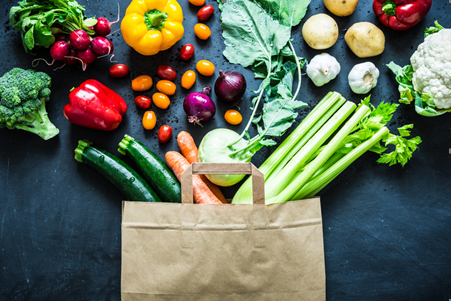
Shay Zeltzer has been in the business of preserving freshness and reducing food waste for almost 30 years now, yet spending two days at the Fruit Logistica trade show in Berlin recently has left him in shock. "Overnight, the packaging industry has turned into a paper-based industry, simply replacing plastic-based packaging with paper. This is pure greenwashing!" he says. "It goes against all logic and any kind of a professional approach: The produce does not stay fresh in this paper/mesh-combined packaging."
According to Shay, who himself is a postharvest specialist and, Founder of Postharvest Hub Ltd, he explained this to a colleague who is in a senior role with ULMA packaging. "'They don't care, it looks more sustainable, and that's what matters,' was his reply."
"I feel obliged to express my thoughts and not to keep this frustration to myself," Shay continues. "This paper revolution is nothing but a trend that is leading to an ecological disaster and taking a huge toll on planet earth which we're going to regret."
Shay says there are multiple reasons why he is against it.
"Producing paper bags uses more energy than plastic production. According to the United States Department of Energy (DOE), the average energy required to produce one ton of paper is approximately 5,162 kWh (craft paper of around 200-250 grams per square meter). One ton of LDPE film (of around 20-30 microns in gauge), according to a study by the European Commission, required about half of the energy to be produced", he shows. "Then, it uses a lot of water: About 1-25 cubic meters of water per 1 metric ton of paper produced."
"It increases dehydration, thus reducing shelf-life and increasing food waste in the supply chain, and at the consumer level, it increases deforestation - and forest farming is not enough to meet the increasing demand for paper-based packaging. And it's heavier and bulkier compared to plastic. Therefore, it has a higher carbon footprint when shipped: A typical plastic bag is around 30 microns in gauge. It weighs 0.0276 grams per square meter. A paper-based bag that has the same tear strength as a plastic bag will be about 60 grams per square meter. Comparing the same characteristic of tear-strength, paper is 2,000 times heavier than the equivalent LDPE bag."
"We had better take action, and the sooner, the better, to reverse this popular trend and get back to sanity," Shay says.
He points out how several technology-leading packaging companies and reputable research institutes, including R.O.P Ltd, StePac, Amcor, The University of CA Davis, the Volcani Research Center, MIGAL Research Institute, and others including dedicated research centers, postharvest specialists, and packaging technologists, spent the equivalent of thousands of years on research and development, focusing on reducing waste and preserving freshness. "This cannot just be flushed down the toilet in favor of a fashionable alternative."
"Standards are needed to make 'sustainability' measurable, and based on these, decisions should be made. Unfortunately, people are blindsided, and decisions are often made simply based on perception."
